As mentioned previously, we have two primary species of lizard here at Curbstone Valley, Alligator Lizards (Elgaria multicarinata multicarinata), and Coast Range Fence Lizards (Sceloporus occidentalis bocourtii).
The most common of the two species by far is the Coast Range Fence Lizard, commonly called the Blue-bellied lizard. This subspecies is a member of the spiny lizard family Phrynosomatidae, and endemic to California, ranging from Sonoma County south to Santa Barbara.
The genus name Sceloporus is from the Greek skelos, meaning “leg” and porus, meaning “pores” in reference to the femoral pores located along the underside of the leg in this species. The species name occidentalis refers to their western distribution.
Coast Range Fence Lizards are found in open, sunny woodlands, chaparral and grasslands near waterways, and around suburban neighborhoods. This is not a desert-dwelling species. On the farm we find the highest concentrations in the orchard and garden areas, often perched up on sandy banks, or on fence posts or tree stumps basking in the sun.
Coast Range Fence Lizards may be brown, gray, or near black in coloration with a blotched pattern across the dorsal scales. Light colored lateral and dorsal markings may appear to form irregular stripes or bands. Their overall coloration provides good camouflage against leaf litter and logs, making it more difficult for their predators, like our resident red-shouldered hawks, to find them.
This is a small lizard species, averaging 21 cm in total length. They have pointed scales of relatively equal size on the dorsal, lateral, and ventral surfaces. Scales on the caudal thigh are smaller, predominantly keeled, and yellow to orange in color. This differentiates the Coast Range Fence Lizard from the Sagebrush Lizard (Sceloporus graciosus gracilis), which lacks the yellow-orange caudal thigh coloration.
Males have blue, and occasionally green markings on the belly, a blue patch on the throat, which is more prominent than the Sagebrush Lizard, and occasionally blue flecks on the dorsal surface.
This coloration can be quite spectacular in some individuals, especially during breeding season.
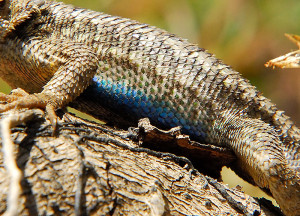
Closer view of the blue and green colored scales on the ventro-lateral surface of a male Coast Range Fence Lizard
Females may have faint blue markings on the lateral surface of the belly, but no blue markings dorsally, and may also appear to have dark barring on the dorsal scales.
One notable feature in this species is the presence of a brown line that connects the orbit and upper corner of the ear and continues to the dorsal surface of the neck.
Like the Alligator Lizards, Coast Range Fence Lizards may detach their tail deliberately (caudal autonomy) as a defensive tactic, and the tail will regenerate, but the regenerated tail will not be as perfect in appearance.
These lizards are excellent climbers, and have sharp, curved claws on both their fore and hind limbs.
The diet of the Coast Range Fence Lizard consists primarily of small invertebrates, including spiders, crickets, beetles, flies, wasps, scorpions, termites and ants.
Occasionally these lizards may be observed with white crusts around their nostrils, like the lizard shown below.
At first glance this might appear to be some sort of fungal growth. However, to conserve water in an arid environment, many lizard species have specialized nasal salt glands that enable them to excrete excess dietary sodium and potassium salts.
This subspecies mates during the spring months, during which time some impressive displays, and even occasional fighting between con-specific males can be observed here on the farm.
The females lay up to 3 clutches of eggs, averaging 8 eggs per clutch, but reportedly may be as few as 3 or as many as 17, between April to July. Eggs laid earlier in the season are larger than those laid later. We were fortunate to observe a female burying her eggs in some loose soil in the orchard last month, but were trying not to disrupt her behavior, so we neglected to film or photograph it. Incubation is approximately 60 days, and the eggs hatch between July to September. We’ve already seen a number of juveniles running around this season, and expect we’ll see more before the season is over.
The lifespan of Coast Range Fence Lizards is believed to be up to six years, however, due to predation by birds and snakes, many will not survive their first year.
As mentioned in our Alligator Lizard post, proteins in the blood of Coast Range Fence Lizards have been shown to have a bactericidal effect on Borrelia burgdorferi, the causative agent of Lyme borreliosis (Lyme disease) [1,2]. With our healthy deer population, and subsequently robust tick population on the property, we’re more than happy to do what we can to encourage our resident lizards to thrive here.
If you have fence lizards where you live, you can help provide suitable habitat by leaving small rock piles, or brush and log piles for them. They will utilize these areas both when basking, and to retreat to when hiding from hungry predators.
———————————
We leave all wild animal species at Curbstone Valley in their natural environments, and are careful not to damage sensitive habitat and hiding places. Note that it is illegal to collect and possess native reptile species in California without the required licenses and/or permits.
[1] Kuo MM, Lane RS, Giclas PC. A comparative study of mammalian and reptilian alternative pathway of complement-mediated killing of the Lyme disease spirochete (Borrelia burgdorferi). J Parasitol. 2000 Dec; 86(6):1223-8
[2] Lane RS, Mun J, Eisen L, Eisen RJ. Refractoriness of the western fence lizard (Sceloporus occidentalis) to the Lyme disease group spirochete Borrelia bissettii. J Parasitol. 2006 Aug; 92(4):691-6.

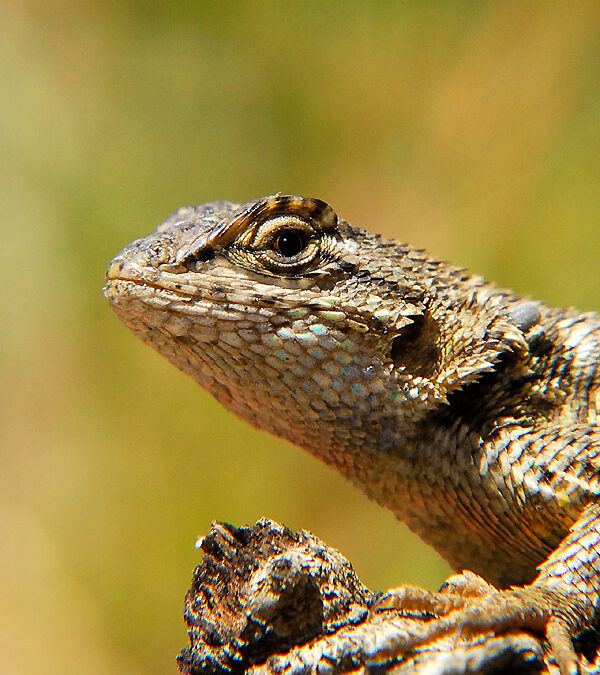
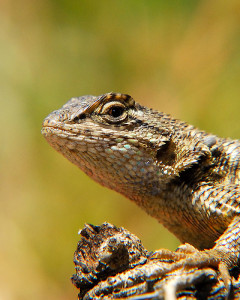
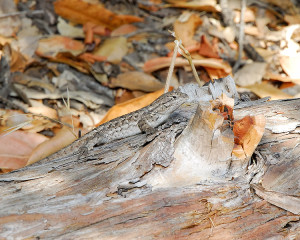
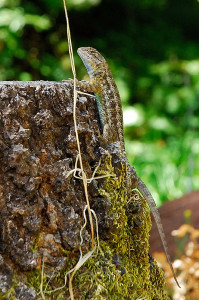
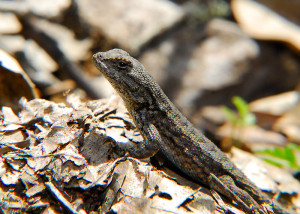
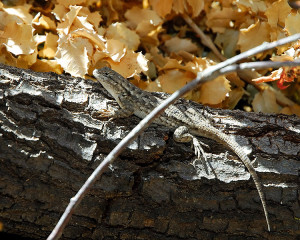

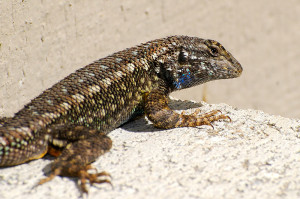
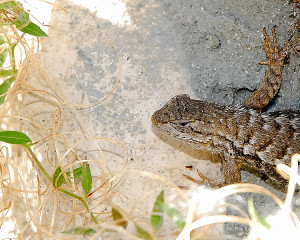
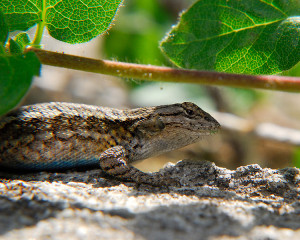
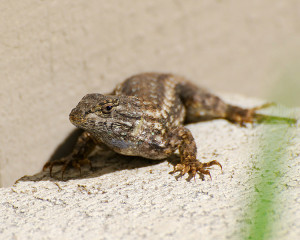
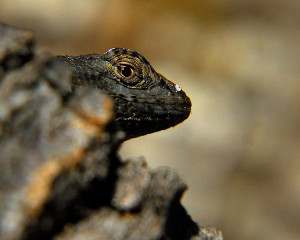

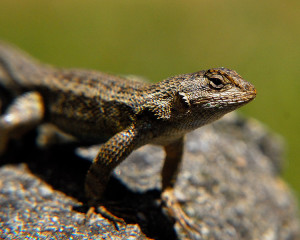
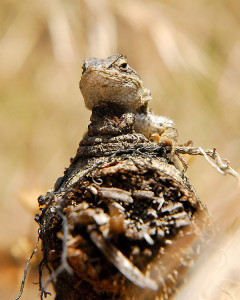







You did a great job with all the pictures of these little guys! I think it’s great to have all the wildlife around, and if they can help by eating unwanted insects, they are treasured guests. Well, maybe we as humans are the actual guests…
I agree, we are the guests! This is their home.
Impressive photos and description. Do you think the lizard in the Palo Alto foothills known as the Blue-bellied Skink is an Alligator or Fence Lizard? And thanks for a new word “caudal”, which I will do my best to work in to a sentence before the day is out.
The only skink I’m aware of here in the Bay Area, with any blue at all, is the Skilton Skink. Haven’t done a post on that little fellow yet, as every one I’ve been close enough to photograph, has been missing its signature blue tail! 😛 I think the Palo Alto creature is more likely a ‘Blue-Belly’ Fence Lizard (this species). They are also sometimes referred to as ‘Swifts’ (not skinks though, different critter entirely). The Alligator lizards are relatively drab in coloration.
Very informative! I wish i knew as much about our local lizards as you know about yours! My oldest son loved to catch lizards when he was young, and we have many fond memories of the pet gecko we had back then. That fence lizard looks a little mean to me!
They do look a little stern I agree. I think their raised brow ridges give them that rather formidable appearance. 🙂
Great post and amazing photos! I seem to have trouble catching these guys on camera, though these days, I must have a dozen at least living in the salvias and elsewhere along the path. It’s so much fun to share the garden!
Hi CV,
Amazing photos to go with an amazing animal, if only Lizards were as common here…
How have they managed with your unusually cold summer this year?
Dear Clare, You will already know that I find it quite difficult to be on close terms with many of God’s creatures and lizards would, I fear, be no exception. In fact, only last night a little panic when a huge moth, quite the largest I have ever encountered, flew in through the open drawing room window where I was sitting reading. But, to return to the present, I always learn so much from your postings and, as for that remarkable blue on the underside of the female lizard, that is a truly wonderful colour.
Clare -I love your lizard pics – superb detail. Wish we had lizards and very interesting about the bacteriocidal effect on Lyme’s Disease
Laura
Love these chunky lizards with their bright blue bellies! They have such a different look from the slender anoles that dominate the landscape in my neck of the woods. I think Florida has its version of the fence lizard, but we never see them where I live. I think they live in the northern half of Florida. Anyway, you have given great information as usual. Never knew they helped control lyme disease. Pretty cool! Certainly a great reason to help protect native species.
Thank you, dear Clare, for the informative post and fine photographs. I can always count on learning something new whenever I visit. You are a wealth of interesting information (though very beneficial, happy to view these lizards from afar 🙂
What an informative post. I enjoyed it very much. As someone who’s already taken antibiotics twice this year to prevent borreliosis, I now feel very fond of these creatures. We’ve made some attempts in our garden to leave some rock piles in corners, hoping to attract lizards, and will redouble the efforts. Barbara
Well done! We love seeing the lizards during the warmer months too but we only identify them as long ones, green ones, and fat ones. 🙂 I noticed that the lizards do the “push-ups” every now and then…is that some kind of a communication system with the other lizards?
Hello,
I always enjoy the beginning spring when the lizards make their reappearance. Lazy summmer days spent sunning themselves. I love to think of how many damaging insects that they are eating 🙂
Clare, I love the color blue of those lizard bellies! -Jean
Hello Clare, I think these lizards are real beauties – such lovely scales and the blue and green markings are wonderful! Your blue-bellied lizards are certainly prettier than our Australian blue-toungued ones!
Fabulous – I love our coast range fence lizards to bits. I’ve sworn off roundup for poison oak – the only use I allowed on our property – primarily because I don’t want to harm them (and other living things).
Wonderful photos Clare! What a handsome fellow… he sure would love my chrysalis! The shot with the blue shimmering from the belly is amazing as is the head and eye portrait. Very impressive creature. A credit to your land management… preserving wildlife spaces. ;>)
Fantastic photos! We don’t need to provide lizard habitat around here, they are everywhere! The best was a western fence lizard sitting on a large ruffled kale leave. I didn’t have the camera with me…
I can’t even imagine gardening with Lizards about. What fun! About an hour’s drive to the west of my gardens is Lizard country here. I was always taught that the blue bellies (which were quite abundant)are poisonous. Perhaps a mother’s attempt to keep her children from catching them? Amaing pictures you have shared!
What a beauty! We don’t have any lizards here, only little garden snakes…
Oh! I adore western fence lizards! I’ve been curious about their crusty nostrils, and am pleased to learn that it does not indicate an unhealthy lizard.
I just shooed a tiny baby lizard out of my studio last week. Amazing to consider those diminutive toe-bones.
I love these lizards. They bring back so many memories! I remember I used to catch these as a kid. The males are so pretty! I never attempted alligator lizards though, they looked to “mean” I suppose,…anyway, I found your blog, and I love it. I have a home garden where I try to grow my own food (especially tomatos, herbs, fruits, and other veggies.) It’s my dream to operate a small scale farm. Your website is an inspiration, thank! 🙂